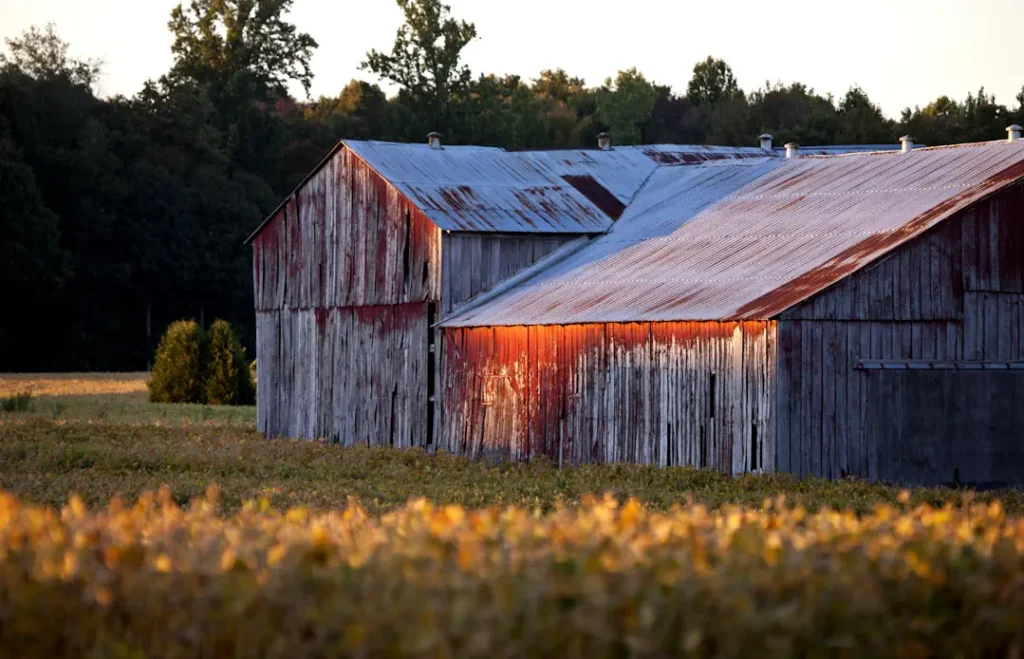Barn roofs are a cornerstone of agricultural architecture, providing essential protection and contributing to the overall functionality and aesthetic of farm buildings. This guide explores the various types of barn roofs, the materials used in their construction, and their historical evolution, ensuring a comprehensive understanding for anyone interested in this vital aspect of farm design.

The Importance of Barn Roofs in Agricultural Architecture
Barn roofs are crucial for safeguarding livestock, equipment, and crops from the elements. They also play a significant role in the efficiency of farm operations by offering insulation and ventilation. A well-designed barn roof can enhance the visual appeal of the farm, adding character and charm to the landscape.
Types of Barn Roofs
Gable Roof
The gable roof is one of the most prevalent types of barn roofs. It features two sloping sides that meet at a ridge, forming a triangular shape. This design is straightforward yet effective, providing excellent water drainage and ample attic space for storage.
Gambrel Roof
The gambrel roof, often seen in traditional American barns, has two slopes on each side. The lower slope is steeper than the upper slope, creating more headroom in the upper level of the barn. This design is ideal for storing hay and other materials.
Hip Roof
A hip roof has slopes on all four sides, which converge at the top to form a ridge. This design is more stable and resistant to high winds, making it suitable for areas prone to severe weather conditions.
Shed Roof
The shed roof, also known as a lean-to roof, has a single slope. It is often used for smaller barns or extensions to existing structures. This design is simple and cost-effective but may not provide as much interior space as other roof types.
Saltbox Roof
The saltbox roof features a long, pitched roof that slopes down to the back, creating an asymmetrical design. This style is often used in colonial-style barns and provides additional space for storage or living quarters.
Materials Used in Barn Roof Construction
Metal Roofing
Metal roofing is a popular choice for barn roofs due to its durability, longevity, and low maintenance requirements. It is resistant to fire, pests, and extreme weather conditions. Metal roofs can also be coated with reflective materials to improve energy efficiency.
Asphalt Shingles
Asphalt shingles are a cost-effective and versatile option for barn roofs. They are available in various colors and styles, making it easy to match the roof with the overall aesthetic of the barn. However, they may not be as durable as metal roofing and may require more frequent maintenance.
Wood Shingles
Wood shingles provide a traditional and rustic look to barn roofs. They are typically made from cedar, redwood, or pine and can last for several decades with proper maintenance. However, wood shingles are susceptible to fire and may require treatment to improve their fire resistance.
Clay Tiles
Clay tiles are a durable and aesthetically pleasing option for barn roofs. They are resistant to fire, pests, and extreme weather conditions. However, clay tiles are heavy and may require additional structural support, increasing the overall cost of the roof.
Slate Roofing
Slate roofing is a premium option for barn roofs, offering unmatched durability and longevity. Slate tiles can last for over a century with minimal maintenance. However, like clay tiles, slate is heavy and may require additional structural support.
Historical Evolution of Barn Roofs
Barn roofs have evolved significantly over the centuries, influenced by changes in agricultural practices, materials, and architectural styles. In the early days, barns were constructed with thatched roofs made from straw or reeds. These materials were readily available and provided adequate protection from the elements.
As agricultural practices advanced, so did the materials and designs used in barn roof construction. The introduction of metal roofing in the 19th century revolutionized barn architecture, offering a more durable and long-lasting solution. Today, modern barns incorporate a variety of materials and designs, each tailored to specific needs and preferences.
Choosing the right barn roof involves considering various factors, including the type of roof, materials, and historical context. Each type of barn roof offers unique advantages and challenges, making it essential to evaluate the specific needs of your farm. Whether you opt for a traditional gambrel roof or a modern metal roof, understanding the different options available can help you make an informed decision.
For more detailed information on barn roof construction and materials, you can visit reputable sources such as the National Agricultural Library or the National Park Service.
By understanding the different types of barn roofs and the materials used, you can ensure that your barn not only serves its functional purpose but also adds to the overall beauty and efficiency of your farm.


Comments